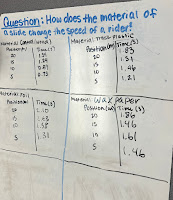Week 6 blog post
Lab Notes: My understanding of the three questions that were asked of us. The three questions are how the phases of the moon occur, what causes the seasons, and what causes a lunar eclipse. The seasons occur because when the sun moves around the earth depending on the different temperatures like when the sun moves around the earth at different points and spots. The phases of the moon occur because of the phases of the earth, moon, and sun. This affects each other and where the moon and sun are most visible. I learned that a lunar eclipse occurs when the earth comes between the moon and the sun. Lunar Eclipses occur when the sun, earth, and moon are aligned in a perfectly straight line. In lab today we talked all about the earth's systems and what makes all of it up. We also heavily talked about how the Earth, Sun, and Moon are closely related to one another. So, the big question was what makes up the earth, sun, and moon systems!
What is a Solar System? Solar means the sun, the sun's system, and everything that has been influenced by the sun. The sun is at the center of our solar system. Geocentric refers to "earth", the earth is in the middle and the sun goes around it. Takes about a month for the moon to go around the earth. We see the moon because the sun reflects on the moon which reflects back towards the earth, being able to see the full moon. The light shines the way that light is facing. If the moon is between the sun and the earth you cannot see the moon at all, that is known as a new moon. A quarter moon is when you are next to the earth but not directly in front of the sun. Goes from new moon to quarter moon.Chapter 5 Textbook Notes: (Sun, Earth, and the Moon)
- What did you learn? I learned all about the main phases of the moon. The 5 that were stated were "new", "crescent", "quarter", "gibbous", and "full". I learned that "new" was when the moon's face was not visible from Earth. "Crescent" is when the moon is between a new moon and a quarter moon. "Quarter" is when from Earth we can see half of the moon's face which represents a quarter of the moon as a whole. "Gibbous" was the one that I learned the most about. This represents when it's between a quarter moon and a full moon. Then "full" of course is when the full moon's face is visible from Earth. Seeing a visual of the moon phases made this easy to understand more extensively and directly by putting pieces together, as I have seen each phase before. This taught me that everything we see on Earth always has a name and purpose behind it.
- What was most helpful? I thought learning about solar eclipses was most helpful because that is again one of the concepts that challenge me the most. I always mix up and get confused about how this occurs. After reading the text though, I am reminded about how this actually occurs! I learned about how the solar eclipse, occurs during a new moon and it is when the sun is being blocked by the moon perfectly crossing in between the earth and the sun. The image in textbook helped me to perfectly understand this. The text showed the sun and earth on the outside then the moon perfectly in the middle!
- What do you need more information on? I need more information on how to just quickly differentiate between the different phases and the different eclipses.


Comments
Post a Comment